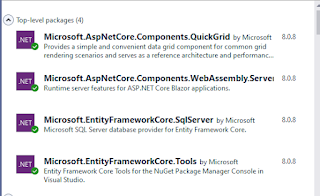How To Prioritize xUnit Test Methods Using TestPriority Attributes and ITestCaseOrderer Interface

Hello, A requirement for a project wherein we want to prioritize tests given that a certain algorithm depends on the execution of another one, we need to create tests priorities so that test methods are executed in a sequential order. After doing some research, I found an article here that demonstrates on how to control the execution order of test methods. Given the sample code below in a console application, I would like to set a priority for each method using the MDAS (Multiplication->Division->Addition->Subtraction) rule using the concepts from that article. public class MathOperations { public double Addition( double a, double b) { return a + b; } public double Subtraction( double a, double b) { return a - b; } public double Multiplication( double a, double b) { var result = a * b; return result; } public double Division( double a, double b) { var result = a / b; return result; } } The methodology that I ...


